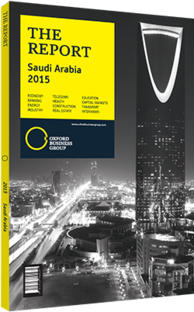Saudi Arabia's bio-mediation projects
The population expansion that has taken place in Saudi Arabia in the last 50 years has not been without consequences for the environment, particularly in urban areas, and the country is now rehabilitating its cities. Local and international teams of engineers, ecologists and architects are working with government agencies, which in turn are attempting to attract investment in sustainable rehabilitation projects.
WADI HANIFAH: The most high-profile scheme to have taken place saw one of the capital city’s main water courses transformed from a sewer into a clean, green ribbon of riverside parkland that has become a treasured civic amenity. The Arriyadh Development Authority (ADA) worked a comprehensive plan with local and international firms such as the Canadian landscape architects Moriyama and Teshima and British engineering firm Buro Happold on the $300m Wadi Hanifah Restoration Project. The main scheme was completed in 2010, 10 years after the master plan had been drawn up, but maintenance and improvement works are still taking place. The scheme involved clearing 500,000 tonnes of rubbish and debris from the 120-sq-km wadi, banning fly-tipping and illegal discharge of effluent, and restoring the natural flora and fauna of the area by growing and planting 50,000 shrubs, 30,000 shade trees, 6000 date palms and 2000 acacia bushes native to the area. At the heart of the scheme was a bio-mediation plant, which uses natural processes to treat and clean 150,000 cu metres of urban wastewater every day. Improvements made to the valley protect the city from flooding and enable Wadi Hanifah and its tributaries to act as a channel for rainfall.
NEW SCHEMES: The success of the Wadi Hanifah project has prompted ADA to invest in other schemes in Riyadh and the surrounding region. In June 2014 it announced it was planning to restore another of the wadis that bisects the city. Wadi Sulay is 110-km-long and runs from the north-west of King Khalid International Airport to Al Kharj south of the city. “The budget allocated for Wadi Sulay is about SR2bn ($533m),” ADA’s director of environmental planning and infrastructure, Ibrahim Alshaye, told OBG. “The government will put in the seed capital, but the project will need private investment.” Beyond the city limits in Wadi Hanifa’s upper catchment area, plans are also taking shape for ALAREDH National Park on an area covering 4300 sq km. ADA would like to see ALAREDH funded on a userpays basis by the licensing concessions or through admission tickets or membership schemes. However, although ADA’s proposals encourage private sector participation it said concessions will only be granted to businesses offering experiences or services that are relevant to the natural setting. In 2015 ADA will set out a five-year plan for the development of the park.
Around 85 km to the north of Riyadh is Thumama Park, a 350-sq-km area that was a royal farm until 1984. ADA has protected the park since 1984 and established 123 desert camp sites which are operated by a private tourism company. The scheme includes mountain lodges, a safari park, family camping areas, a botanical garden and a zone dedicated to Arabian horses. Wadi Hanifah has become a popular leisure amenity for people in Riyadh. The developments are hoped to spawn an ecotourism industry, with tour operators seeing the opportunity for visitors to experience the area’s unique landscapes. “National Geographic Channel and other international media firms have put out documentary films and articles about these places,” Alshaye said. “The country has a rich natural heritage and there are some small companies offering visits, but nothing more coordinated than that, so we would welcome international ecotourism operators.”
OTHER CITIES TO FOLLOW: The Wadi Hanifa development has inspired a number of other cities in Saudi Arabia to look for ways to improve their natural habitats, to tackle pollution and to create green spaces as an amenity for their local residents. “Everywhere has been expanding during the last two decades and now they are realising that something will have to be done to improve the environment,” ADA’s Alshaye told OBG.
You have reached the limit of premium articles you can view for free.
Choose from the options below to purchase print or digital editions of our Reports. You can also purchase a website subscription giving you unlimited access to all of our Reports online for 12 months.
If you have already purchased this Report or have a website subscription, please login to continue.

